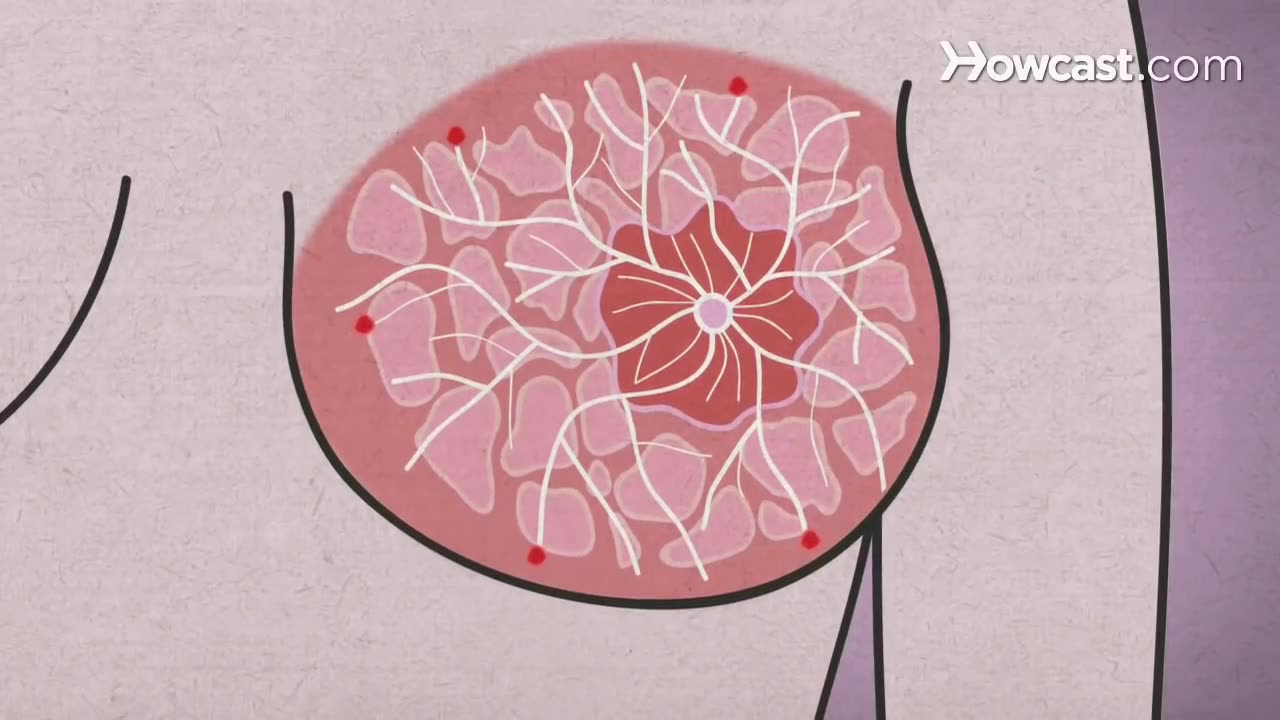Premium Only Content

How to Recognize Breast Cancer Symptoms
Help yourself heal with these helpful products!
Disposable Nursing Pads for Breastfeeding:
🔗https://amzn.to/3x3CV6z
American Made 250 Hot Pink Satin Awareness Ribbons:
🔗https://amzn.to/3x3HP3N
Inspirational Bracelets for Women:
🔗https://amzn.to/3NFu3dk
Bamboo Chemo Headscarf for Women Hair Loss:
🔗https://amzn.to/3x1t55c
Female External Catheter:
🔗https://amzn.to/3Ka9mEk
Full Playlist: https://www.youtube.com/playlist?list=PLLALQuK1NDrgfCChmo4u35GZvdULckNq3
-
-
Watch more Client Videos videos: http://www.howcast.com/videos/418228-How-to-Recognize-Breast-Cancer-Symptoms
Over the course of a woman's lifetime, she may experience breast changes. While many end up being nothing to worry about, it's important to have any changes that you notice checked by a doctor -- just to be on the safe side. Here are the potential breast cancer symptoms to watch out for.
Warning
This video does not replace actual medical advice. Always consult your doctor with any questions or concerns.
Step 1: Do a monthly self-exam
Start performing a monthly self-exam as soon as your breasts are fully developed. Checking yourself regularly is important -- you need to know what your breasts feel like normally so you can recognize any changes. Examine yourself several days after your period ends, when your breasts are least likely to be swollen and tender. If you're no longer having periods, choose a day that's easy to remember, such as the first or last day of the month. Keep in mind that it's not uncommon for breasts to feel lumpy due to benign fibrocystic breast disease, cysts, scar tissue, infections, and other causes that have nothing to do with cancer.
Tip
For instructions on how to do a breast self-exam properly, go to "Breastcancer.org":http://www.breastcancer.org/.
Step 2: Have lumps checked
Know what you're feeling for: a lump that feels different from your breast's normal lumpiness, like discovering a pebble in your oatmeal. Though many lumps are benign, anything that feels new or odd should be checked by your doctor -- even if you've recently had a clean mammogram. Check for lumps in your armpits, too.
Tip
Cancerous lumps are more likely to be hard, painless, and unmovable.
Step 3: Beware of dimpled skin
Look for visible changes, like dimpled, puckered, thickened, reddened, or scaly breast skin, or a flattening or indentation on the breast. All are potential breast cancer symptoms that should be evaluated.
Step 4: Note nipple changes
Recognize the nipple changes that can indicate breast cancer -- pain; redness; scaliness; itching; skin thickening; the nipple turning inward; or discharge other than breast milk.
Step 5: Have pain and swelling evaluated
See your doctor about swelling in all or part of your breast, or breast pain. Though swelling and soreness are usually no cause for concern, these symptoms can be signs of a rare but aggressive form of the disease known as inflammatory breast cancer.
Step 6: Get regular check-ups
Have your doctor perform a breast examination at your yearly check-up, and begin annual mammograms at age 40. If you have a family history of the disease, tell your doctor: they may suggest that you start having mammograms at an earlier age. Knowing the signs of breast cancer -- and being proactive about knowing how to recognize them early -- is the best way to protect yourself.
Did You Know?
In a "Breastcancer.org":http://www.breastcancer.org/ survey of more than 2,200 women, 37 percent said they first detected their breast cancer with a self-exam.
-
 LIVE
LIVE
Boxin
3 hours agoToday We start Fable 2!
532 watching -
 25:23
25:23
The Connect: With Johnny Mitchell
1 day ago $2.08 earnedWhy They're Lying To You About The LA Riots, ICE Raids, & The Future Surveillance State
10.8K21 -
 2:38:44
2:38:44
The Charlie Kirk Show
12 hours agoLIVE: US Bombs Iran - Trump Speaking Soon
458K734 -
 58:03
58:03
FRENCHY4185
2 hours agoSPLITGATE 2 : PLAYING W/ FOLLOWERS
4.75K1 -
 2:34:04
2:34:04
bogebop
2 hours ago $0.27 earnedNo Man's Sky - LIVE -
8.19K1 -
 LIVE
LIVE
Lofi Girl
2 years agoSynthwave Radio 🌌 - beats to chill/game to
105 watching -
 58:11
58:11
Right Side Broadcasting Network
11 hours agoLIVE REPLAY: President Trump Addresses the Nation Following U.S. Attack on Iran's Nuclear Sites - 6/21/25
351K248 -
 8:00:06
8:00:06
GamersErr0r
11 hours ago $0.15 earnedBig Mac Daddy Bronze King Slay | Marvel Rivals | Rank Terrorist
10K1 -
 2:32:47
2:32:47
Raginglumberjackv1
5 hours ago $0.25 earnedTake Back America Live steam
9.16K1 -
 3:49:04
3:49:04
PandaCoder
4 hours agoStreaming with Buds
10.2K